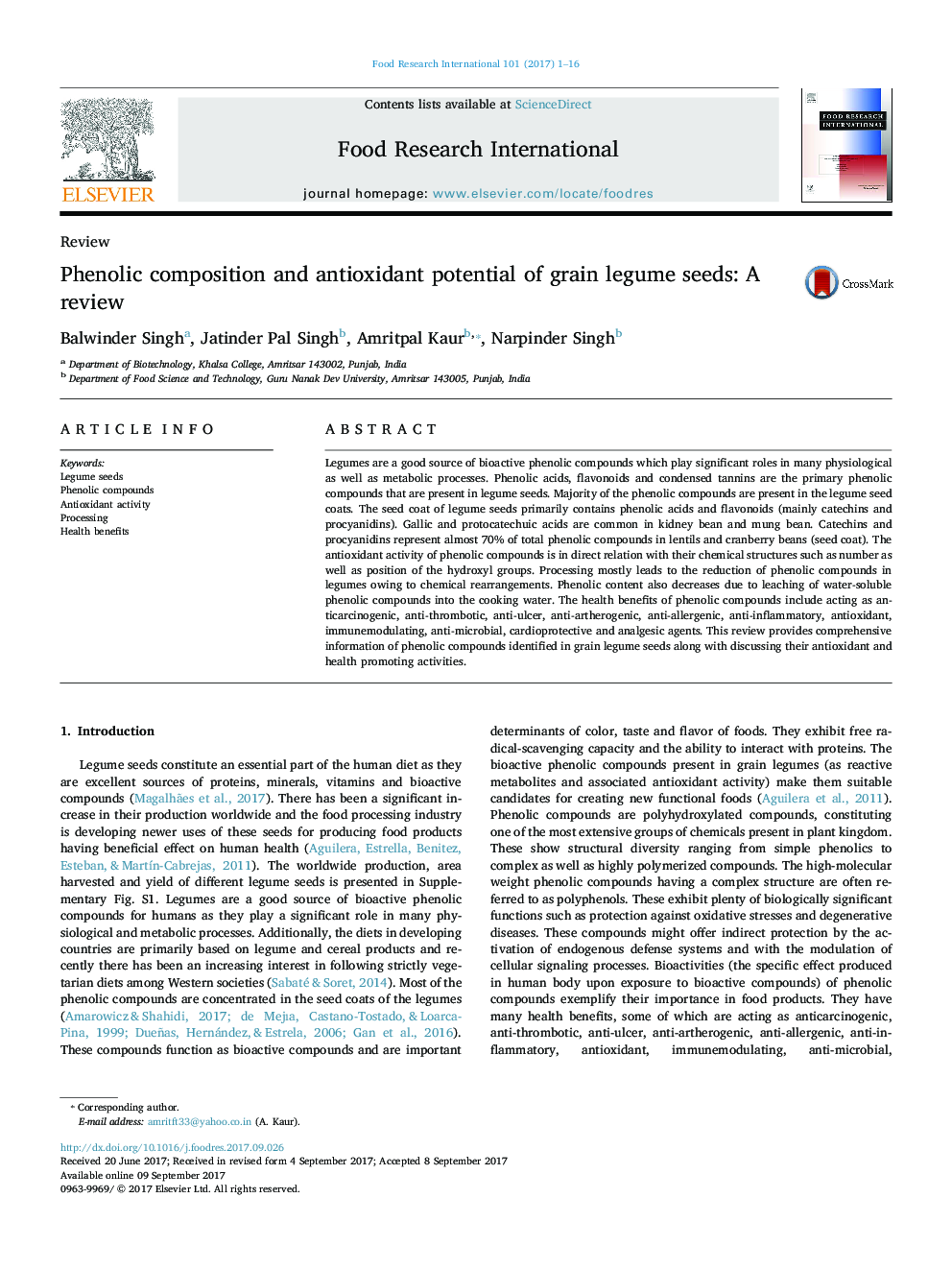| Article ID | Journal | Published Year | Pages | File Type |
|---|---|---|---|---|
| 5767787 | Food Research International | 2017 | 16 Pages |
â¢Phenolics are commonly identified in seeds of edible legumes.â¢These compounds include phenolic acids, flavonoids and tannins.â¢Distributed differently in seed coat and cotyledon of legumes.â¢Phenolics exert a wide range of health benefits.
Legumes are a good source of bioactive phenolic compounds which play significant roles in many physiological as well as metabolic processes. Phenolic acids, flavonoids and condensed tannins are the primary phenolic compounds that are present in legume seeds. Majority of the phenolic compounds are present in the legume seed coats. The seed coat of legume seeds primarily contains phenolic acids and flavonoids (mainly catechins and procyanidins). Gallic and protocatechuic acids are common in kidney bean and mung bean. Catechins and procyanidins represent almost 70% of total phenolic compounds in lentils and cranberry beans (seed coat). The antioxidant activity of phenolic compounds is in direct relation with their chemical structures such as number as well as position of the hydroxyl groups. Processing mostly leads to the reduction of phenolic compounds in legumes owing to chemical rearrangements. Phenolic content also decreases due to leaching of water-soluble phenolic compounds into the cooking water. The health benefits of phenolic compounds include acting as anticarcinogenic, anti-thrombotic, anti-ulcer, anti-artherogenic, anti-allergenic, anti-inflammatory, antioxidant, immunemodulating, anti-microbial, cardioprotective and analgesic agents. This review provides comprehensive information of phenolic compounds identified in grain legume seeds along with discussing their antioxidant and health promoting activities.
Graphical abstractDownload high-res image (308KB)Download full-size image
